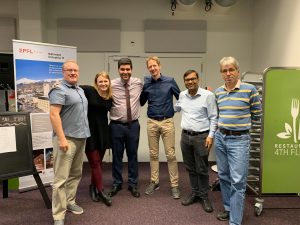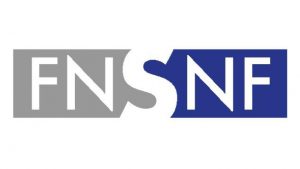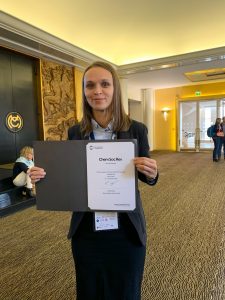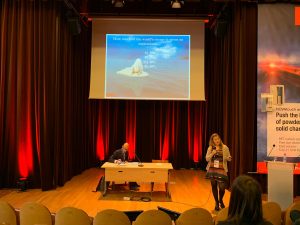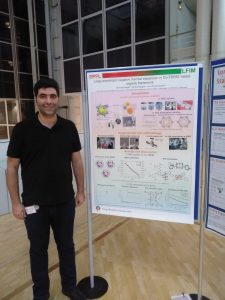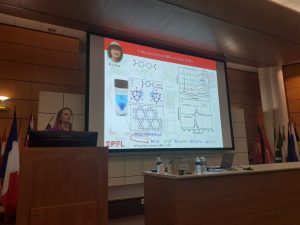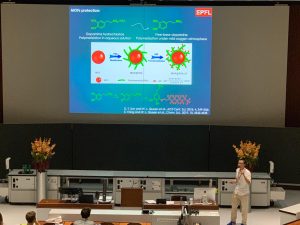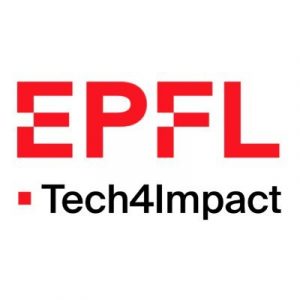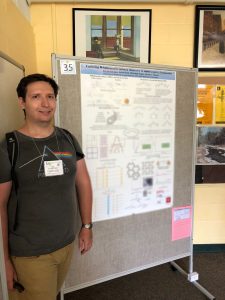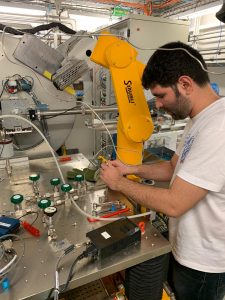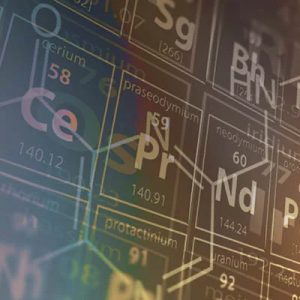|
|
||
2020-07-11
Preparation of Highly Porous Metal–Organic Framework Beads for Metal Extraction from Liquid StreamsThis work has been published in JACS. 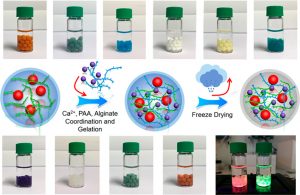
A facile microdroplet method, used to structure MOFs into beads, has been developed. The new method is based on double-cross-linked networks consisting of PAA, sodium alginate, and Ca2+ ions. Both PAA and alginate are environmentally friendly macromolecules, and the bead synthesis is carried out in water, making this structuring method ecologically attractive. This method was proven universal by employing it with a host of structurally diverse MOFs. To test the applicability of the structuring method for liquid separations, an Fe–BTC/PDA composite possessing record-setting performance for the extraction of heavy metals from water, was structured into beads. 1 g of such beads can purify over 10 L of surface water containing highly toxic concentrations of Pb2+ (600 ppb). Congratulations Shuliang! Reference: S. Yang, L. Peng, O. A. Syzgantseva, O. Trukhina, I. Kochetygov, A. Justin, D. T. Sun, H. Abedini, M. A. Syzgantseva, E. Oveisi, G. Lu, and W. L. Queen, J. Am. Chem. Soc., 2020, published online. DOI: 10.1021/jacs.0c02371 |
||
|
|
||
2020-05-12
Lead Sequestration from Perovskite Solar Cells Using a Metal–Organic Framework Polymer CompositeThis work has been published in Energy Technology. 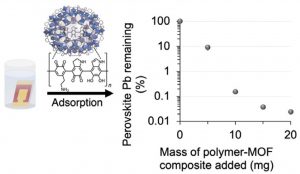
This work results as a collaboration with Prof. Nazeeruddin and proves the use of FeBTC/PDA as a Pb2+ scavenger from water, specifically for use in an “safe-by-design” approach in upscaling lead halide perovskite materials. We studied the uptake kinetics and found that all cations present in the triple‐cation perovskite film increased composite performance, as did acid rain pH values. We optimized the treatment protocol required to lower the Pb2+ concentration, resulting from a fully dissolved 3.17 cm2PSC to below the EPA drinking water limit, and successfully scaled up the optimized treatment protocol to a 45.5 cm2 monolithic series solar cell and found that the material was stable to real‐world light exposure and temperature conditions (18 h under 1 sun illumination at 60 °C). Cost analysis indicated that the widespread incorporation of FeBTC/PDA into a commercialized perovskite panel was possible, with an estimated <30 USD/m2 cost at nonindustrial production volumes. Congratulations to all the authors! Reference: A. J. Huckaba, D. T. Sun, A. Sutanto, Y. Zhang, M. Mensi, W. L. Queen,* and Md. K. Nazeeruddin*, Energy Technol., 2020, 8, 2000239. |
||
|
|
||
2020-05-08
Large anisotropic negative thermal expansion in Cu-TDPAT metal-organic frameworkThis work has been published in Nano Research. 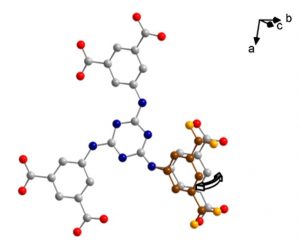
In this work revealed that Cu-TDPAT shows large anisotropic negative thermal expansion (NTE). Variable temperature crystal structures, obtained from in situ single crystal X-ray diffraction, were used to elucidate the structural motions that are responsible for the unusually large NTE behavior of Cu-TDPAT. We also demonstrated that complementary in situ DRIFTS measurements can provide further insight into the vibrational motions. Overall, this work not only quantifies the NTE and reveals its mechanism, but also provides valuable knowledge that could be relevant to the implementation of this material in a number of gas separations, where the thermal properties of the material together with heat distribution in the packed adsorption bed can significantly affect adsorption behavior.
Congratulations to all the team! Reference: M. Asgari, I. Kochetygov, H. Abedini, W. L. Queen, Nano Res, 2020. |
||
|
|
||
2020-04-20
A novel integrated Cr(VI) adsorption–photoreduction system using MOF@polymer composite beadsThis work has been published in Journal of Materials Chemistry A. 
The collaboration with Prof. Smit group led to the publication of this work, highlighting the development of an integrated adsorption–photoreduction system to capture Cr(VI) in contaminated aqueous solutions and reduce it to Cr(III). To do this, a double amino-functionalized UiO-66 was synthesized and then loaded into chemically modified, hydrophilic polymeric beads. The resulting composite simultaneously serves as an adsorbent and photocatalyst and demonstrates one of the highest Cr(VI) uptake capacities reported to date even when in the presence of large quantities of other competing cations and anions that are commonly found in surface and ground water. Congratulations Bardiya! Reference: B. Valizadeh, T. Nguyen, S. Kampouri, D. Sun, K. Stylianou, B. Smit, W. L. Queen, J. Mater. Chem. A, 2020, 8, 9629-9637. DOI: 10.1039/d0ta01046d |
||
|
|
||
2020-01-29
Understanding How Ligand Functionalization Influences CO2 and N2 Adsorption in a Sodalite MOFThis work has been published in Chemistry of Materials. 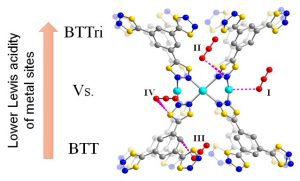
The LFIM presents a comprehensive study of CO2 and N2 adsorption in two sodalite MOFs known as Cu–BTTri and Cu-BTT. While the sodalite structures are similar, the ligand exchange has an extreme effect on the performance of the material with regard to CO2 and N2 adsorption. Despite that Cu–BTTri exhibits a lower overall adsorption capacity and weaker interactions with both CO2and N2, the material surprisingly offers a higher selectivity for CO2 over N2 compared to that of its tetrazole counterpart. These results stem from the fact that the triazolate offers a stronger Cu–ligand bond compared to the tetrazolate, and hence, significantly weakens the interactions along the z-axis, where small molecules bind. Congratulations Mehrdad! Reference: M. Asgari, R. Semino, P. Schouwink, I. Kochetygov, J. Tarver, O. Trukhina, R. Krishna, C. Brown, M. Ceriotti, W. L. Queen, Chem. Mater., 2020, 32, 1526. |
||
|
|
||
2019-11-29
First generation doctors from LFIMThis November, two of the first PhD students that joined the group, Daniel Sun and Mehrdad Asgari, successfully defended their theses. Public defences will take place on January, you are all welcome. Congratulations for your great job during the last 4 years!
|
||
|
|
||
2019-11-29
MOF/polymer/catalyst composite for enhanced reductive amination of HMFThis work has been published in Green Chemistry. 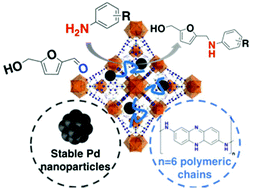
LFIM just reported a useful one-step procedure to stabilize and homogeneously disperse Pd nanoparticles while polymerizing p-phenylenediamine in the pores of UiO-67. The final UiO-67/PpPDA/Pd composite was employed to convert biomass derived 5-(hydroxymethyl)-furfural (HMF) into valuable chemicals through reductive amination catalysis. The proposed reaction was tested towards a wide variety of substrates, leading to conversion yields between 80 and 96% in only 2 hours. Remarkably, the recyclability of the composite was clearly improved (15 cycles) compared to commercial Pd/C (3 cycles). Congratulations Vikram! Reference: V. V. Karve, D. T. Sun, O. Trukhina, S. Yang, E. Oveisi, J. Luterbacher and W. L. Queen, Green Chem., 2020, 22, 368-378. DOI: 10.1039/C9GC03140E |
||
|
|
||
2019-11-19
Spark funds RespyraThe Swiss National Science Foundation (SNSF) funded Dr. Olga Trukhina with the Spark grant, which motivates the development of unconventional ideas in short periods of time. The project is entitled ‘Realizing the potential of plastic waste through chemical transformations (Respyra)’. Congratulations Olga!
|
||
|
|
||
2019-11-07
Dr. Olga Trukhina wins poster award at EuroMOF19The conference concluded with the poster award ceremony. LFIM member Dr. Olga Trukhina was one of the six researchers awarded with the best poster prize. Congratulations Olga!
|
||
|
|
||
2019-11-07
Prof. Queen showcasing LFIM work at EuroMOF19Last EuroMOF19 conference (Paris, France) included a number of excellent talks and posters, sharing very creative approaches in the field of MOF research. Prof. Queen contributed with an invited talk about the advantages of MOF/Polymer composites for heavy and precious metal removal from contaminated water.
|
||
|
|
||
2019-10-01
Poster contribution at Energy Materials WorkshopLFIM researcher, Mehrdad Asgari, presented the results of his PhD thesis at the prestigious Energy Materials Workshop hosted in ESRF (Grenoble, France). Well done Mehri!
|
|
|
2019-10-01
Prof. Queen gives an invited talk at Energy Materials Workshop in ESRFLFIM shares its experience of using advanced synchrotron techniques for characterization of porous frameworks in different applications.
|
|
|
2019-09-20
LFIM communicates at SCS Fall MeetingDr. Shuliang Yang contributed with an oral presentation at the Swiss Chemical Society Fall Meeting 2019 in Zurich. Great job!
|
|
|
2019-09-03
The Clean Water Initiative is underway!Daniel T. Sun wins two grants, the SNF/Innosuisse’s Bridge Proof of Concept and EPFL’s Tech4Impact Playgrant, to develop next generation prototype filter devices. The objectives are the production of clean potable water and the selective extraction of highly valuable commodities. Congratulations! Shinzou wo Sasageyo!
|
||
|
|
||
2019-08-20
Poster presentation at Gordon Research ConferenceLFIM researcher, Ilia Kochetygov, presented his work with NHCs at the prestigious Nanoporous Materials Gordon Conference in New Hampshire. Great job!
|
||
|
|
2019-08-20
State-of-the-art experiments at the Swiss Light SourceLFIM scientists conduct in situ total scattering experiments at BMX04SA, Paul Scherrer Institute (PSI), Villigen. Exciting results coming soon!
|
|
|
2019-08-13
Major impact in the field by LFIMWork published in ACS Central Science by LFIM is highlighted as Top 1 % cited papers in the Chemistry field by the Web of Science. 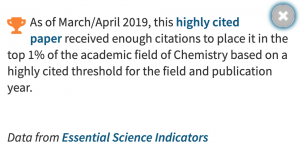
Reference: D. T. Sun, L. Peng, W. S. Reeder, S. M. Moosavi, D. Tiana, D. K. Britt, E. Oveisi, W. L. Queen, ACS Cent. Sci., 2018, 4, 3, 349. DOI: 10.1021/acscentsci.7b00605 |
|
|
2019-08-13
JACS Young Investigators Virtual Issue 2019The JACS paper about gold extraction using MOF/polymer composites has been featured in the 2019 JACS Young Investigators Virtual Issue.
Prof. Omar Yaghi highlighted the work: “Gold extraction from wasted electronic devices is an important problem. Wendy Queen and co-workers report an Fe-MOF polymer composite capable of extracting ultratrace amounts of gold from wastewater, fresh water, ocean water, and solutions used to leach gold from electronic waste and sewage sludge ash. The MOF material has an exceptional removal capacity, 934 mg gold/g of composite, with high cyclability”. Congratulations Daniel! Reference: D. T. Sun, N. Gasilova, S. Yang, E. Oveisi, W. L. Queen, J. Am. Chem. Soc., 2018, 140, 16697. DOI: 10.1021/jacs.8b09555 |
|
|
2019-08-10
A Mystical material for seawater uranyl captureA first reaction paper highlighting the work by Guangshan Zhu group is published in ACS Central Science. 
The very smart design of MISS-PAF-1, which can extract 99.97% of uranyl from a 5 ppm solution in less than 120 min, relies on the encoding of very specific, directional interactions for uranyl ions inside the porous framework. The approach can be summarised in three steps: 1) mixing of uranyl ions with salicylaldoxime molecules to create a uranyl coordination complex having a predetermined configuration of oxime fragments, 2) grafting of the complex onto the internal surface of the PAF-1 template and 3) release of the uranyl species via treatment with sodium bicarbonate. The resulting modified material offers suitable anchors able to achieve a desired local bonding geometry that is specific to the uranyl ion. It should be noted that it is estimated that 4.5 billon tons of this commodity are found in the sea. In this article, Daniel T. Sun and Wendy L. Queen also emphasise the evidences of climate change and the necessity to move to sustainable energy sources. References: D. T. Sun and Wendy L. Queen, ACS Cent. Sci., 2019 Just accepted. DOI: 10.1021/acscentsci.9b00675 Y. Yuan, Q. Meng, M. Faheem, Y. Yang, Z. Li, Z. Wang, D. Deng, F. Sun, H. He, Y. Huang, H. Sha and G. Zhu, ACS. Cent Sci, 2019, Just accepted. DOI: 10.1021/acscentsci.9b00494 |
|
|
2019-08-07
Organic polymer inside MOF channels preserves porosityThe work is just published in JACS. 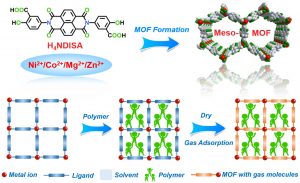
LFIM reported a novel approach that allows mesoporous MOFs to prevent from collapsing thanks to the controlled polymerisation of dopamine monomers into their cavities. This strategy was proved useful for the MOF family M2(NDISA), where M = Ni2+, Co2+, Mg2+ and Zn2+, attaining surface areas 5, 24, 50 and 20 times higher, respectively, upon post-synthetic polymerisation. The polymer were also used to immobilise Pd nanocrystals, which led to outstanding performance in Suzuki–Miyaura cross-coupling. Congratulations Li and Shuliang! Reference: L. Peng, S. Yang, S. Jawahery, S. M, Moosavi, A. J. Huckaba, M. Asgari, E. Oveisi, M. K. Nazeeruddin, B. Smit and W. L. Queen, J. Am. Chem. Soc., 2019, 141, 12397. DOI: 10.1021/jacs.9b05967 The publication has been highlighted in the EPFL website. |

